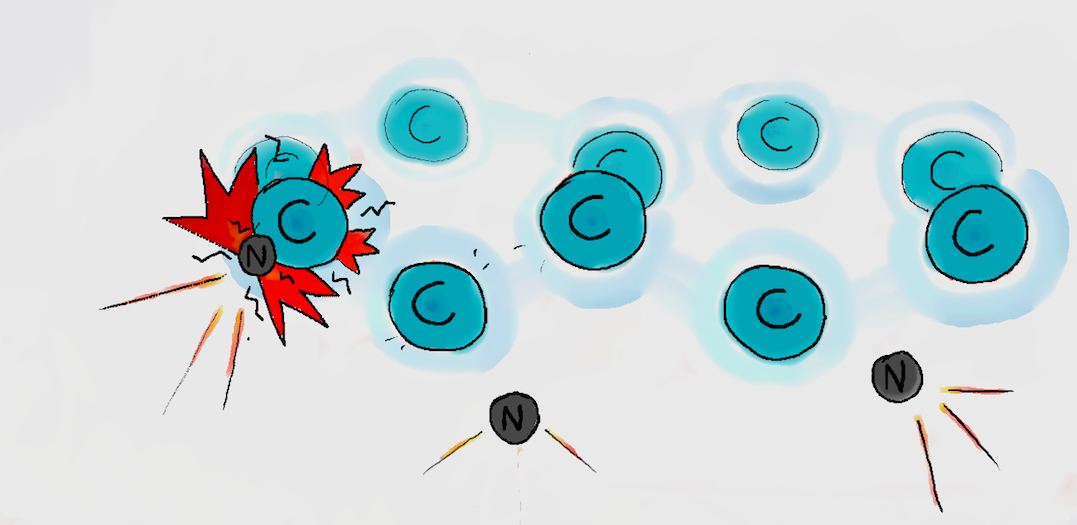 This year the Manchester branch of the British Science Association launched it’s first ever science journalism competition. They presented AS and A-level students across Greater Manchester with the daunting task of interviewing an academic researcher then using this material to create an article accessible to someone with no scientific background. This was by no means a simple task, especially since many of the researchers were working on basic research – the type of work which may not be sensational but which represents the real ‘nuts and bolts’ of scientific research and without which no major breakthroughs would ever be made. Despite the challenges implicit in this task all our entrants stepped up and we were astounded by the quality of work submitted.
This year the Manchester branch of the British Science Association launched it’s first ever science journalism competition. They presented AS and A-level students across Greater Manchester with the daunting task of interviewing an academic researcher then using this material to create an article accessible to someone with no scientific background. This was by no means a simple task, especially since many of the researchers were working on basic research – the type of work which may not be sensational but which represents the real ‘nuts and bolts’ of scientific research and without which no major breakthroughs would ever be made. Despite the challenges implicit in this task all our entrants stepped up and we were astounded by the quality of work submitted.
Today we’re proud to publish our winning article written by Tilly Hancock from Oswestry School:

Imagine you are inside a nuclear reactor, a UK design. Not only are you inside it, but you are part of it; a carbon atom inside the graphite core which houses the control rods and fuel rods (the ‘moderator’). Around you the environment is glowing with heat and radiation, all given off in the splitting (fission) of uranium-235 nuclei. The temperature of 450°C is no problem, and you remain tightly bound in a lattice arrangement with your fellow carbons.
However, when the uranium nuclei split, they spit out more neutrons which pelt towards you at high speeds. One slams into you, and you slow it down, as is your job, so it travels at a suitable speed to cause more fission events. In this process you absorb the neutron’s energy, and get knocked out of your slot in the lattice. You whiz towards your fellow carbon atoms, knocking more out of their spaces like a billiard ball, wreaking havoc in the strict order of the graphite crystal. Eventually you transfer all of your extra energy to your neighbours and come to rest, filling a vacancy left by another displaced carbon or squeezing in between the orderly lattice layers (as an ‘interstitial’). Here you wait, ready to absorb the excess energy of the next neutron. The upheaval is routine to you, as during your life in the reactor you may switch places up to 30 times.
This is just one atom, but what are the consequences of millions jumping around like this?

Well, the effects are unpredictable. The radiation barrage that the graphite endures can cause it to change its material properties; its thermal expansion, strength and even its dimensions, in strange ways. Even to the human eye, these changes would be noticeable. The moderator can change shape by up to 2%, depending on the grade of graphite; a surface that started smooth may finish rough. The dimensions may warp so that the control rods used to restrain the nuclear reaction may no longer fit into their channels. It is clearly important to completely understand how the graphite will change when designing new reactors or maintaining the existing ones. The problem is that we don’t.
For years, the only way to investigate the effects of the jumping carbon atoms has been using ‘materials test reactors’, which can take over 3 years and £10 million to complete a single experiment.
Is there an easier way to predict what the carbons’ dance can lead to?
Like in so many fields, computers are now proving their worth. Manchester University’s Dr Graham Hall designs models which do part of the test reactors’ job. He imagines how those millions of carbon atoms move around and uses similar previous models to predict some of the complex property changes. What’s more, to model a lump of graphite in a reactor-like environment, just one week would be expended, as opposed to those three years required by the test reactors. Although these models are unlikely to be used to design new reactors, they are tackling the problem of the variability between different grades of graphite.

Comparing computer predictions to experimental data has helped researchers advance their understanding of what those carbon atoms really get up to inside the reactors and more importantly, how this affects the moderator as a whole. Hopefully, one day soon only minimal usage of materials test reactors will be needed, to calibrate models like this one, sparing millions of pounds and many, many years, but for now the jumping carbon atoms will continue to keep researchers on their toes.
Post by: Tilly Hancock – courtesy of Sarah Fox (Volunteer with the British Science Association)
For more amazing scientific articles please visit our friends at Things We Don’t Know – Things We Don’t Know is a not-for-profit organisation that seeks to explain the cutting edge questions scientists are trying to solve, in everyday language.
Save
Comments are closed.